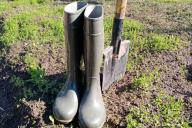Gardeners and vegetable growers appreciate natural and free fertilizers that really work and help increase harvests.
These include wood ash. It contains up to 75% calcium, up to 13% potassium and up to 7% phosphorus, as well as a number of microelements (manganese, zinc, sulfur, etc.).
What plants are contraindicated with ash?
The fertilizer has an alkaline reaction. Therefore, it cannot be used to feed plants that require acidic soil.
There are relatively few such crops. For example, cranberries, lingonberries, hydrangeas, blueberries, viburnum, honeysuckle, bilberries, and most conifers.
What plants benefit from ash?
Ash can be used as a fertilizer for those plants that grow well in neutral soil with a pH level of 7 and above. For example, cucumbers, pumpkin, beans, cabbage, peas and many others.

How to properly add ash
There are two application options: dry and in the form of an aqueous solution. In the first case, the application rate is 0.1-0.2 kg per 1 sq. m.
The ash solution is prepared as follows: a glass of combustion product, the same amount of vinegar (9%) and 10 liters of water. In this case, vinegar is needed to improve the absorption of calcium and ash by plants.
Mistakes when adding ash
1. Ash cannot be mixed with ammonium fertilizers - all the nitrogen will evaporate. Fertilizers are applied separately. Ammonium compounds are used no less than 3 weeks after using the ash.
2. Do not mix ash with superphosphate and phosphate rock. Otherwise, the key element of the second fertilizer will pass into a form that is difficult for plants to access.
3. Ash cannot be used if the soil is very alkaline. Otherwise, it will be difficult for plants to absorb useful elements.








